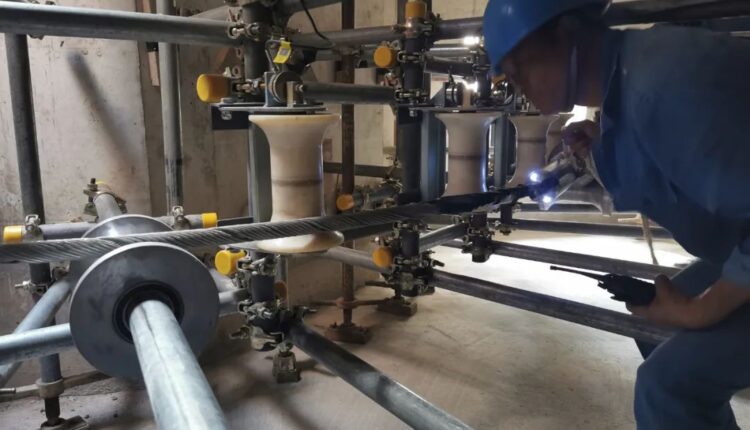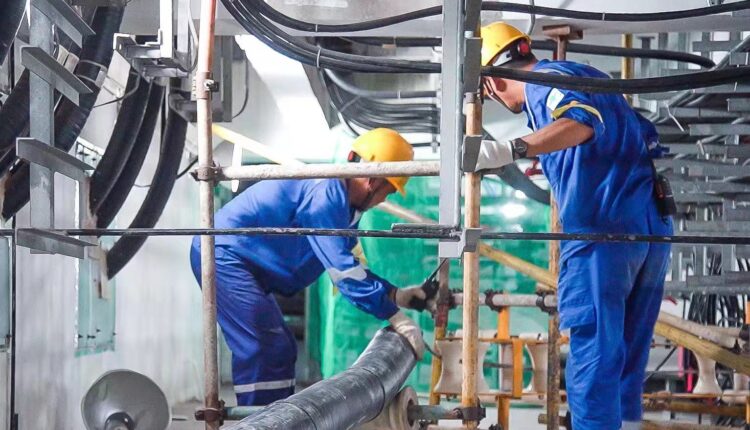The first 10kV three-axis high temperature superconducting AC cable in China was laid in Shenzhen, marking another important progress in the first demonstration project of superconducting cable in China applied to high-load density power supply areas, laying a solid foundation for the production this year.
It is reported that this project is a major scientific and technological project of Southern Power Grid Company. The 10-kV high temperature superconducting AC cable developed by Shenzhen Power Supply Bureau connects the 220kV Binhe Substation and 110kV Xinghe Substation in Futian Central District, Shenzhen, and will provide power support for important loads in Shenzhen Central District.

The transmission capacity of superconducting cables is much larger than that of conventional cables. The power transmission capacity of a 10-kV three-same-axle high temperature superconducting AC cable is larger than that of a regular 110kV cable, but the transmission loss is only one quarter to one-fifth of that of conventional cables, which is very suitable for power supply in high-load density areas.
However, due to the great difficulty of project implementation, at present, the above application scenarios are still blank at home and even around the world.
The superconducting cable laid this time passes through the bustling roads, subway areas, core business circles, etc. in the central city of Shenzhen.
The laying environment space is narrow, with special and complex working conditions such as 24.2 meters vertical drop, more than 10 corners less than 90 degrees and short-span S-shaped corners, and staggered transmission pipelines. There is almost no precedent experience to follow. It is a typical “small corridor” of complex power transmission in big cities. Even laying conventional cables is very challenging.
In the face of such special and complex working conditions, in order to ensure the smooth completion of superconducting cable laying, in the past three months, the superconducting cable project team of Shenzhen Power Supply Bureau has carried out dozens of on-site surveys and discussions, and formulated a special solution of “off-site simulation laying + on-site pre-laying”.
The project team has built a simulation site in the factory site, restored various special and complex working conditions, carried out many simulation laying drills, obtained a large amount of valuable data, accumulated on-site experience, and laid a solid foundation for field laying. At the engineering site, analog cables of the same scale and weight were pre-layed twice, providing the most direct reference basis for formal laying.
During the laying process, in addition to the conveyor and hoist required for conventional cable laying, the project team has developed special auxiliary guidance, turning radius limit protection, pipe center positioning, well-shaped conveyor wheel set and other laying tools, which ensures that the superconducting cable body laying is foolproof, safe and reliable.
Next, the high temperature superconducting AC cable project will enter the installation test and commissioning stage of superconducting cable accessories and supporting low-temperature refrigeration systems, measurement and control protection systems, etc. When the project is put into operation.
It is expected to “package” to solve many problems and challenges such as the difficulty of power grid construction land in large cities, the continuous growth of power grid load demand, and the tendency of urban transmission and distribution corridors to be saturated, so as to provide a new solution for the problem of power supply in high-large cities with high-load density areas around the world.
HTS cable terminations are the links between the conventional power grid at room temperature and a superconducting cable at cryogenic temperature. Inside the termination, the stranded high temperature superconducting AC cable HTS tapes in the cable are connected to the internal cold end of the termination while outside the termination, conventional power distribution cables are connected to its external warm end.
In addition, the termination provides an interface point for the supply and return of coolant to the cable system, needed to keep the HTS cable in its superconducting state. Proper design and manufacture of the HTS cable terminations are vital for long-term reliability of the overall system. As a matter of fact, in-grid high temperature superconducting AC cable demonstration projects show that time out of service is more frequently due to termination issues than due to problems in the high temperature superconducting AC cable HTS cable itself (Schmidt et al., 2011). Because of the complex requirements, superconducting cable terminations are more complicated than the HTS cable itself in terms of design, manufacturing and installation.

